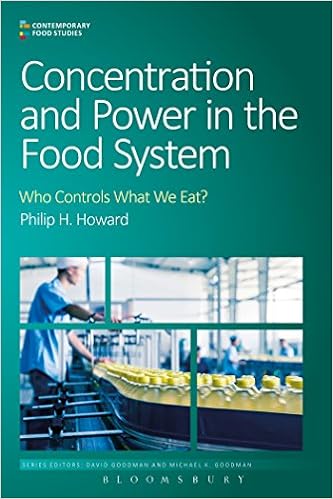Join Health Affairs for a virtual conversation between me and Angela Odoms-Young of Cornell University discussing the evolution of US food and nutrition policy, the current policy landscape, and thoughts on what lies ahead. It’s at 1:00 p.m. EDT. To join the Webinar, click here.
Weekend reading: Concentration and Power in the Food System
Philip H. Howard. Concentration and Power in the Food System: Who Controls What We Eat? Bloomsbury, 2016.
I don’t know Philip Howard personally but I have long appreciated his graphic visualizations of the extent of concentration—only a few companies owning fast percentages of the market—in various industries:
- Organic Processing Industry Structure, January 2016
- Global Seed Industry Structure, 1996 to 2013
- Concentration in the U.S. Wine Industry, December 2012
This brief book summarizes his work in developing these graphics and makes it clear why he thinks industrial concentration is a problem for American democracy. Without competition, these companies get away with doing whatever they want. He gives a few examples:
Walmart, which controls 33 percent of US grocery retailing, is challenged for exploiting its suppliers, taking advantage of taxpayer subsidies, and paying extremely low worker wages…Monsanto, which controls 26 percent of the global commercial seed market, is denounced for its influence on government polocies, spying on farmers it suspects of saving and replanting seeds, and the environmental impacts of herbicides tied to these seeds. These impacts tend to disproportionately affect the disadvantaged—such as women, young children, recent immigrants, members of minority ethnic groups, and those of lower socioeconomic status—and as a result, reinforce existing inequalities…Like ownership relations, the full extent of these consequences may be hidden from public view.
Howard’s solution? The food movement!
Joining these movements and supporting the alternatives created by others could therefore be essential to maintaining our ability to feed ourselves in the future.
The book is fun to read (“seed-industrial complex”) and, obviously, well illustrated. If you want to know how current-day food markets really work, this is the place to start.



